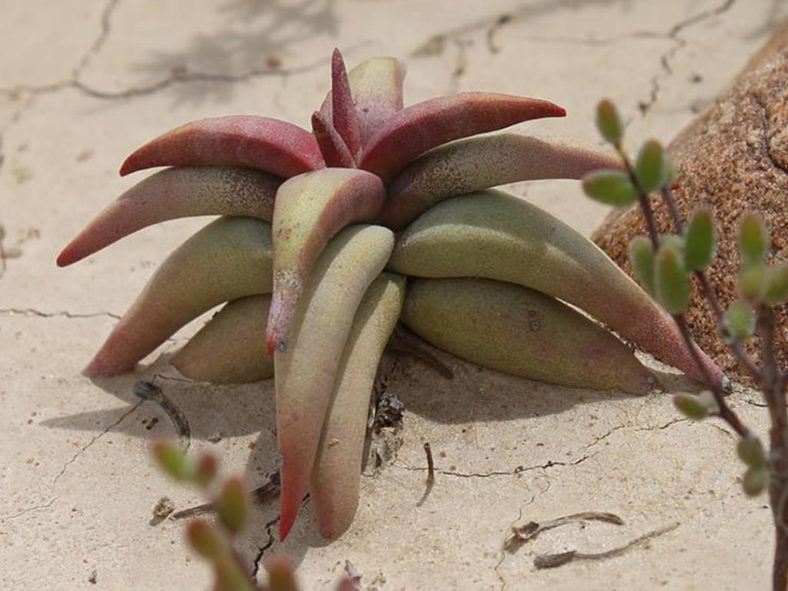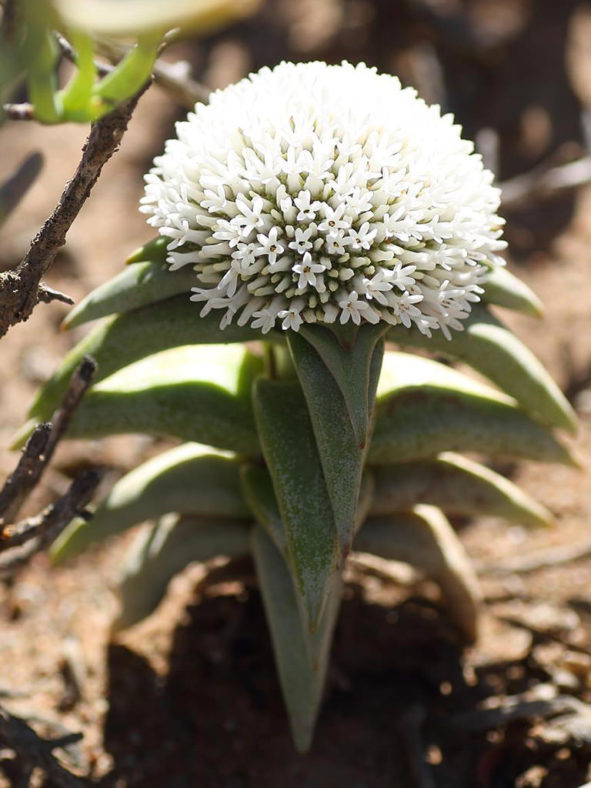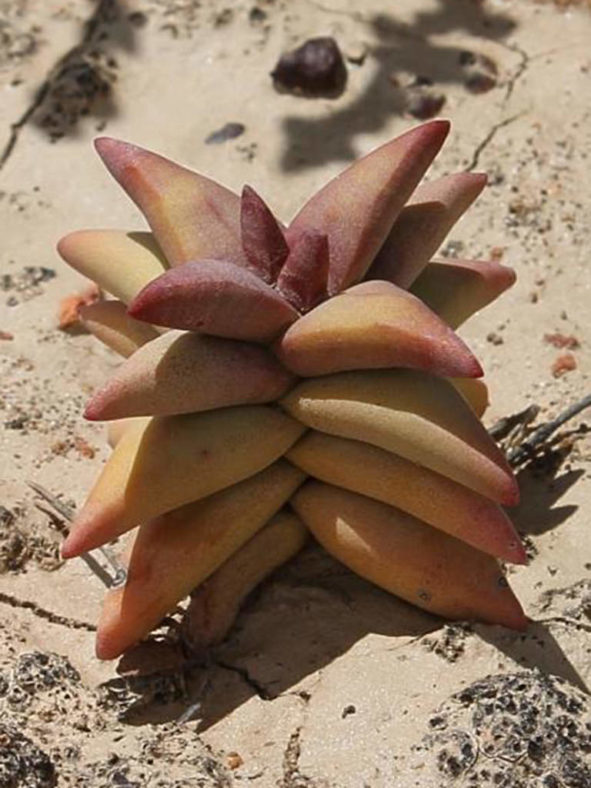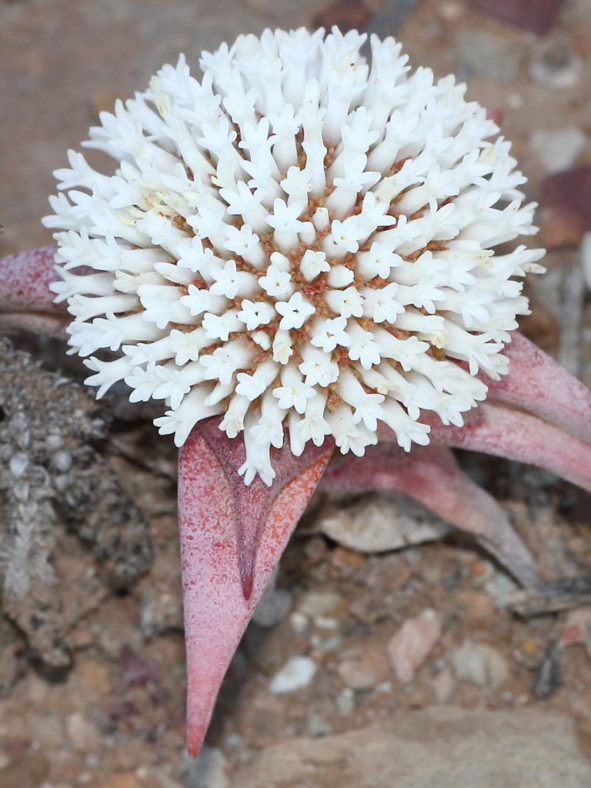Scientific Name
Crassula congesta subsp. laticephala (Schönl.) Toelken
Synonym(s)
Crassula laticephala, Tetraphyle congesta var. laticephala
Scientific Classification
Family: Crassulaceae
Subfamily: Crassuloideae
Genus: Crassula
Etymology
The subspecific epithet "laticephala (lat-ee-SEF-uh-luh)" means "wide head" and refers to the large flower head composed of hundreds of individual flowers clustered together.
Origin
Crassula congesta subsp. laticephala is native to South Africa. It is restricted to the Western Cape province, between Barrydale and Oudtshoorn, and grows on gentle slopes or in depressions usually associated with quartzite gravel.
Description
Crassula congesta subsp. laticephala is a small, short-leaved monocarpic succulent that can grow up to 4 inches (10 cm) tall, usually having one erect stem or rarely branched. It is smaller, has more pointed leaves, lightly broader inflorescence, and slightly shorter flowers opening a little later than Crassula congesta subsp. congesta. The leaves are gray-green to brown-green and arranged in decussate pairs. They are lance-shaped, recurved, measuring up to 1.2 inches (3 cm) long and 0.5 inches (1.3 cm) wide.
The flowers are sweetly scented, white or cream-colored, and appear in an attractive, densely crowded terminal head in winter. They can grow about 0.4 inches (1 cm) long. It takes several years for the plant to get to flowering age.

How to Grow and Care for Crassula congesta subsp. laticephala
Light: C. congesta subsp. laticephala prefers full sun to partial shade. However, intense afternoon sun in the hottest period of summer can burn the leaves of the plant. Therefore, a place with morning sun and afternoon shade would be perfect. Indoors, place your plant in a window that receives at least 6 hours of direct sunlight.
Soil: This plant is not particular about soil pH but requires very porous soil with excellent drainage. Use commercial potting soil mixes designated for succulents, or mix your own.
Hardiness: Like most Crassulas, this succulent will tolerate short-term freezing, but extremes of cold or heat will cause it to lose leaves and die. C. congesta subsp. laticephala can withstand temperatures as low as 30 to 50 °F (-1.1 to 10 °C), USDA hardiness zones 10a to 11b.
Watering: Avoid overwatering using the "soak and dry" method, where the soil is soaked with water, slowly drained, and left to dry out before watering again. Reduce watering in winter. Potted plants require more frequent watering than those in the ground.
Fertilizing: C. congesta subsp. laticephala does not need much feeding but will benefit from a small amount of organic fertilizer when it starts actively growing in mid-spring.
Repotting: Repot as needed, preferably in spring, at the beginning of the active growth period. Make sure the soil is dry before you begin repotting.
Propagation: This succulent is rarely seen in cultivation. In its natural habitat, it reproduces by seeds. Flowers are probably pollinated by moths.
Learn more at How to Grow and Care for Crassula.
Toxicity of Crassula congesta subsp. laticephala
C. congesta subsp. laticephala is nontoxic to people and pets.
Links
- Back to genus Crassula
- Succupedia: Browse succulents by Scientific Name, Common Name, Genus, Family, USDA Hardiness Zone, Origin, or cacti by Genus
Photo Gallery
Click on a photo to see a larger version.


